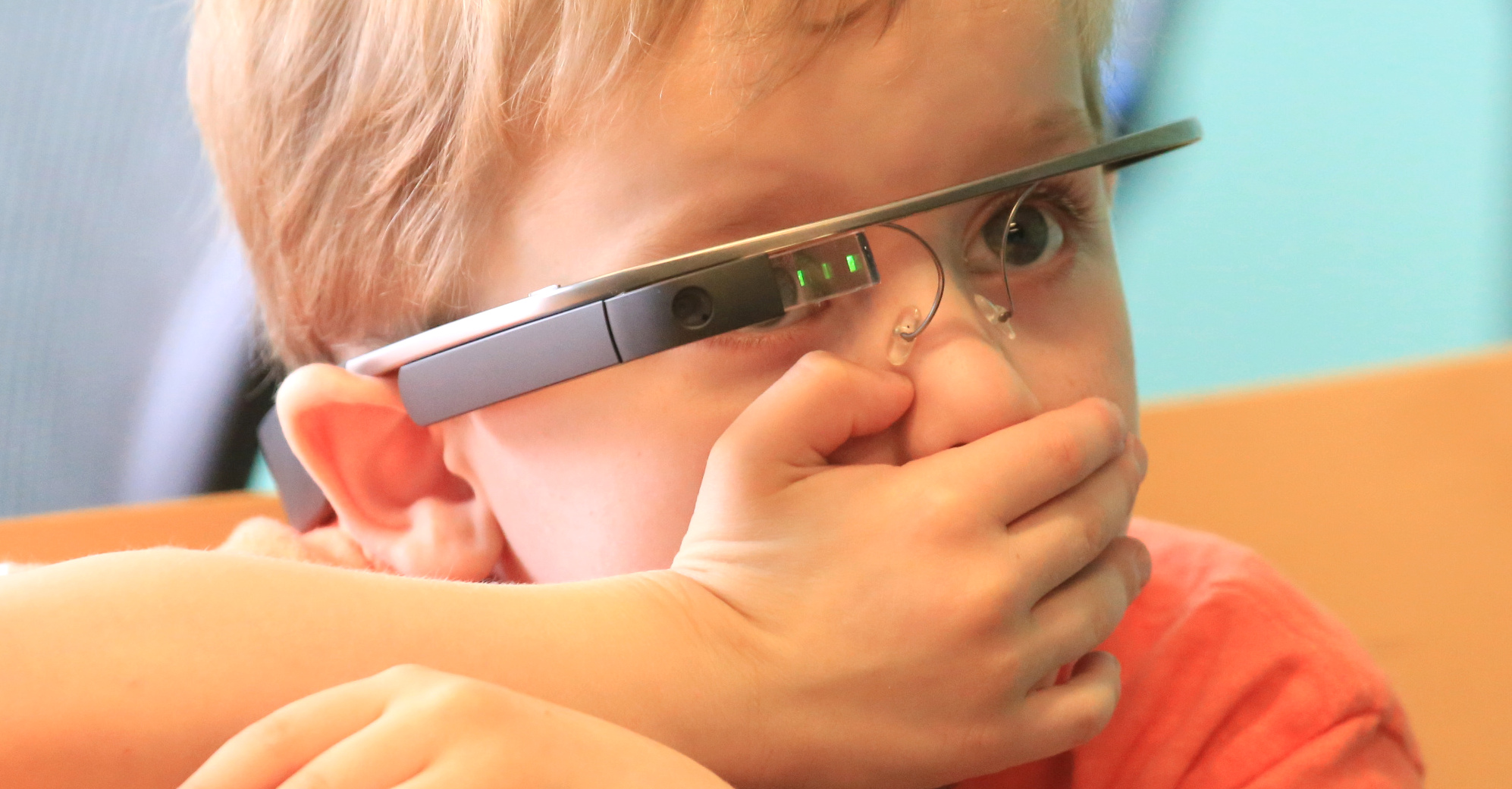5 Examples of Virtual Reality Technology Utilization in the Field of Health
Now, technology has cover various fields and helping people to meet various needs, starting from transportation needs with the presence of Gojek, ease of shopping with dozen of marketplaces such as Tokopedia and Bukalapak, Until now reaching the medical world. Remarkably, the use of technology in the health sector uses sophisticated and fairly new technologies such as Augmented Reality (AR) and Virtual Reality (VR).
These are few examples of technology utilisation ranging from therapy, to cancer treatment:
1. Autism Healing Therapy with AR Glasses
For people with autism, the kind of everyday social interactions that we usually take for granted can be a challenge that is very difficult to deal with. If it is not immediately and directly addressed and being left alone, the difficulties will continue to drag on even into adulthood and reach the work environment. A pilot company based in Cambridge, Massachusetts, created an Augmented Reality platform that is able to help people with autism interact with others, a smart glasses with extraordinary emotional tracking technology.
The Empower Me System gets the title as the world’s first smart AR glasses wearable platform specifically designed to help people with autism. This technology functions as a “digital trainer”. It can be ran on Google Glass and provides a variety of games – focusing on helping those with autism build important skills in living life.
AR technology in the health field has a series of applications. For example, in an Emotional Guess oriented to children, players must identify different emotions in others around them and then match them to emojis. Emotions are processed by smart glasses using the latest facial recognition technology, so players can learn based on real people, not avatars.
2. Treatment of Alzheimer’s with Virtual Reality Technology
Virtual Reality (VR) has become a trend especially in the entertainment industry, more specifically in the gaming industry, including Playstation which now has its own PS VR. And what about the use of technology in the health sector? Doctors at the Visiting Angels hospital are now using Virtual Reality for the treatment of Alzheimer’s.
Larry Meigs as CEO of Visiting Angels Hospital welcomes the potential of technology in the health sector to help seniors live more easily, especially for Alzheimer’s sufferers.
The impact of VR can be seen, though in a limited way in how some doctors and researchers diagnose and treat the disease. Here are some pictures about the potential of Virtual Reality in influencing the future treatment of Alzheimer’s and Dementia.
Detecting the Risk Soon
Alzheimer’s has become very easy to detect thanks to VR technology. In October last year, Alzheimer’s care scientists from Germany published a study in which they used a virtual maze to help detect Alzheimer’s. In the study, scientists tested people between the ages of 18 and 30 and asked them to try to navigate the VR maze.
Amazingly, this test proved successful. Based on their differences in movement, scientists can accurately identify subjects who have genetic markers for Alzheimer’s. This means that with the help of VR, scientists can diagnose high-risk patients even those who are even 18 years old, allowing families to plan Alzheimer’s treatment in the future.
Virtual Environment Helps in Patient Care
Alzheimer’s care professionals have tested and treated Alzheimer’s using VR. One such trial, conducted in 2014, used Microsoft Kinect technology to create a calming scene like a sunlit forest where Alzheimer’s sufferers can interact with the scene. In addition there are also other newer experiments, this type of treatment is called “sensory therapy,” which has advantages in terms of safety and therapeutic use. Usually, it’s too risky to introduce Alzheimer’s sufferers to certain environments, no matter how comfortable and soothing. But with VR, Alzheimer’s treatment professionals have been able to build a relaxed environment where patients are truly safe and comfortable.
One interesting possibility is the creation of a virtual environment that reminds Alzheimer’s patients about their childhood. It is even possible to create a customized environment for each patient, introducing music or details that are very soothing
3. Imaginary Friend Society, AR Application for Patients with Child Cancer
An application of the Imaginary Friend Society is here to entertain children with cancer. Given that not everyone, especially children, can get through cancer treatment quite steadfastly, it is hoped that the presence of this application can help them to be more able to undergo rehabilitation and healing.
The Imaginary Friends Society application was born in collaboration with the Pediatric Brain Tumor Foundation, a non-profit organization engaged in the health of children with cancer, with technology company Kika.
“Brain tumors are the most common cancer that occurs between the ages of 0-14,” said Bill Hu, CEO of Kika Tech.
Cancer diagnosis is a scary thing for anyone, but for children it can be even more frightening. They are bombarded with intimidating and unknown terminology and procedures. Things like radiation, hair loss, blood transfusion, chemotherapy, and surgery. That’s where the Imaginary Friend Society is present.
Imaginary Friends Society entertains children with cancer through funny monster characters displayed on the screen. The existing characters are made as if they appear in the real world with Augmented Reality (AR) technology.
The Imaginary Friend Society is a technology in the health sector that can help young patients understand various aspects of cancer in a lighter way. Through a series of 22 short animated films, the Imaginary Friend Society explains various topics of complex cancer in ways that children can understand. Because the more they understand their care, the less frightening these things are.
Meanwhile, existing films are made to help children understand medical terms that are foreign to them. The films also explain the stages of treatment that cancer patients must go through.
Entertainment is considered as the thing needed to help children through treatment. Creativity Site, May 23, 2018, said it was based on a survey conducted by the Pediatric Brain Tumor Foundation earlier this year. The survey results state that anxiety is the biggest problem for children who are diagnosed with cancer.
Character monsters can say various motivational sentences. “You are stronger than you know”, “Believe in yourself”, and “Don’t give up, son”, are some of them.
Since its launch, the Imaginary Friend Society has had a tremendous impact in helping families and children around the world face a cancer diagnosis.
You can get this application by downloading it on the App Store for iOS and Play Store operating systems for Android.
4. Treating Drug Addiction
Researchers at the University of Houston are using Virtual Reality (VR) technology to explore innovative methods in the treatment of addictions to drugs.
When people with addiction participate in this program, they install virtual reality headsets and navigate through various scenarios. Users are taken to a fully immersive environment based on their typical drug use environment, the location can be at a house party, in a private home or in a club. For alcoholism, you can use bar simulations. For heroin users, the details might include an open pizza box or spoon and a shot on the table designed to trigger the desire to consume heroin.
Basically, technology in the health sector is an extension of exposure therapy for a variety of psychological disorders, providing a virtual environment that is as close to the real environment as the user allows them to teach them how to resist the uncomfortable feeling that triggers the use of substance.
The more immersive the environment, the more useful its function as a therapeutic tool. Is the music in the background appropriate? Is the smell smelled realistic? Do people talk and look as expected by patients? objects in the virtual environment can be touched, with patients being able to touch objects such as drug-giving devices without actually using prohibited substances in them.
This technology in the health sector is not intended to replace comprehensive addiction treatment, more to adding tools to complement care.
Desire is partly physiological and partly psychological. Virtual reality setups will not be able to extinguish physiological aspects, but are expected to enable patients to withstand their psychological desires. And the results can certainly not be instant because it requires a process.
The expectation of using technology in the health sector is so that people with addiction will be able to learn how to check their desires and manage them properly in controlled virtual reality scenarios, so when desire arises in their real environment they have the choice not to give up on using it .
Of course, learning to hold back desire is only part of recovery, and is an important thing to master. Addiction is a complex disease that requires treatment at various levels over a long period of time. A comprehensive treatment approach at Lakeview Health aims to address not only substance abuse, but also the underlying causes.
5. Overcoming Phobia with AR Technology
Arachnophobia is a technical term for fear of spiders. In Indonesia, there are no wild spiders that threaten human safety, even though so many people panic when they see it. Their bodies react with heart palpitations, chills, dizziness, sweating, and shortness of breath. Sometimes the psychological pressure is so great, the fear is so extraordinary, that the phobia sufferer must undergo phobia therapy. Exposure therapy, which involves confronting patients with one or more real spiders, is considered very effective. However, phobia sufferers often cannot take advantage of such care, either because exposure to these eight-legged creatures is too frightening to deal with, or because of the lack of phobia treatment options available in their place of residence.
In the “DigiPhobie” project, researchers at the Fraunhofer Institute for Biomedical Engineering IBMT worked to correct the problem, in collaboration with the Promotion of Software GmbH, Saarland University and Saarland University Medical Center. They develop technology in the health sector by building a new type of digital therapy system designed to enable exposure therapy in the household environment. This is based on the idea that by facing feared objects in virtual reality or augmented reality, patients will find it easier to deal with their fears. This system consists of a digital therapy environment, usable sensors and augmented reality (AR) glasses.
All phobia therapy tasks are digitally simulated. Phobia sufferers can carry out various challenges – such as catching spiders with glasses and postcards or touching them with their fingers – in virtual reality, “said Dr. Frank Ihmig, a scientist at Fraunhofer IBMT, describing a therapeutic approach. Ihmig and his team made software for therapeutic management and a biofeedback control system, which consists of wearable sensors that measure patients’ vital parameters during a session, such as heart rate variability, skin conductance, and respiratory rate.
From the measured parameters, it is possible to extract features that indicate emotional stress. Using this stress feature, the researchers trained machine learning algorithms. Game elements such as size, number and distance of spiders, and the behavior of arachnid movements, can be adjusted dynamically. It is conceivable, for example, that therapy can be applied to other phobias such as fear of snakes or cockroach.
It is remarkable that technology can be a solution to treat psychological ailments to treat certain diseases, it is hoped that in the future more and more breakthroughs will be made in the use of technology for the treatment and treatment of other types of diseases, so that technology is not only “sophisticated” but also can be useful to save many lives.
For more complete information about technology opportunities in the health sector, please contact us. Or if you have potential and interesting ideas to share? With pleasure, we are ready to make it happen for you.




